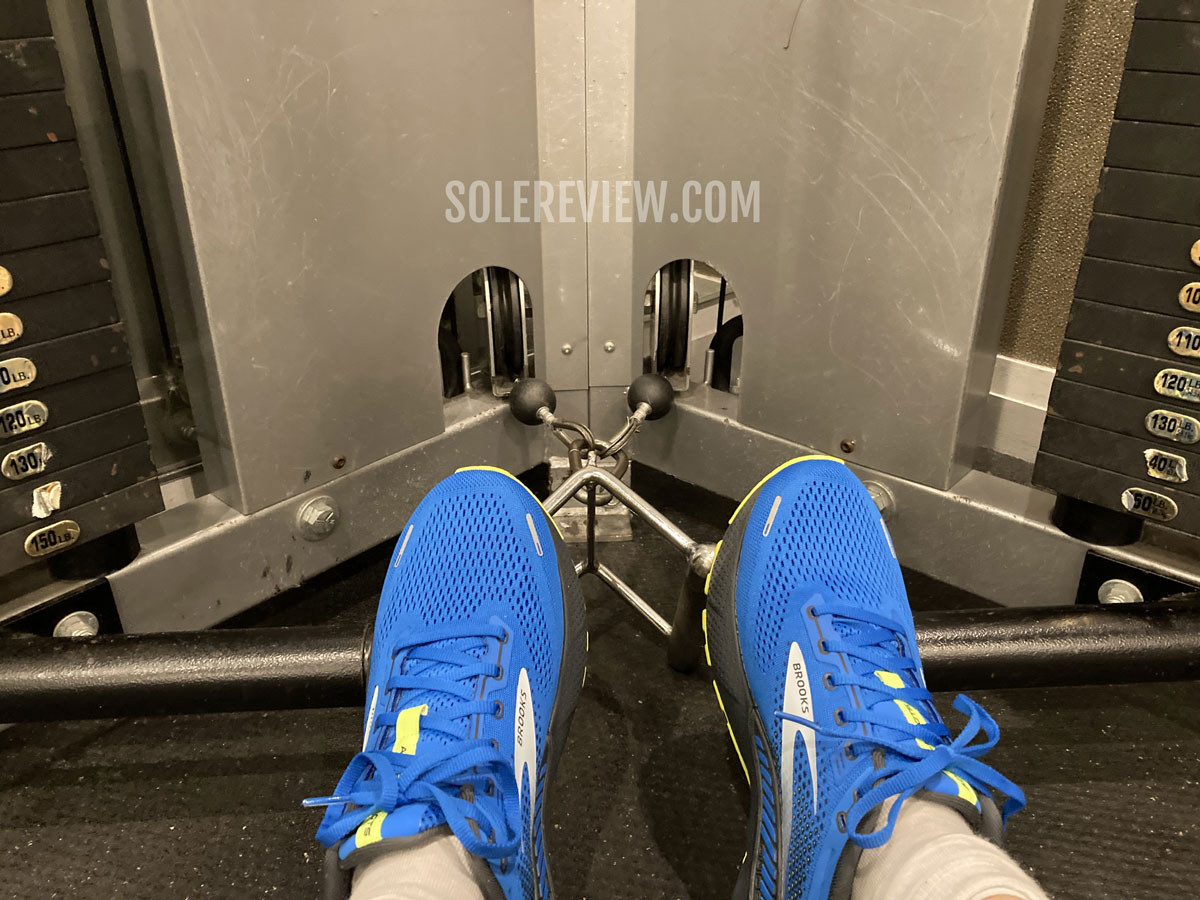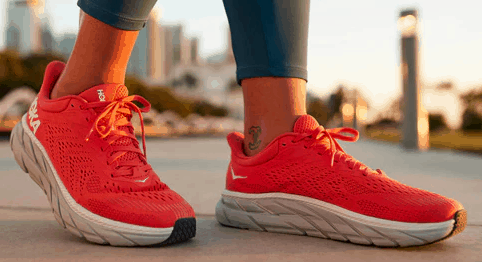Yes, running shoes can be used for gym workouts. Running shoes provide cushioning and support, making them suitable for gym activities such as cardio, weight training, and aerobic exercises.
They offer stability and shock absorption, essential for various gym workouts. The right running shoes can help prevent injury and provide comfort during gym sessions, making them a versatile choice for fitness enthusiasts. When it comes to choosing the right footwear for gym workouts, many people wonder if running shoes are suitable.
While it’s important to consider factors such as fit, cushioning, and support, running shoes can indeed be used for gym activities. This article will explore the benefits of using running shoes for the gym, providing insights into their versatility and functionality for a wide range of exercises. Whether you’re hitting the treadmill, lifting weights, or participating in group fitness classes, the right pair of running shoes can enhance your performance and overall gym experience.

Credit: www.nike.com
Choosing The Right Footwear
When it comes to working out, wearing the right footwear is crucial to prevent injuries and ensure maximum performance. But can running shoes be used for gym workouts? While running shoes are specifically designed for forward motion, they may not provide the necessary support and stability needed for lateral movements and weightlifting exercises. In this post, we will explore the different types of sports shoes and key factors to consider when choosing the right footwear for your gym workouts.
Different Types Of Sports Shoes
There are different types of sports shoes designed for specific activities. Here are a few:
| Type of Sports Shoe | Activity |
|---|---|
| Running shoes | Running, jogging, walking |
| Cross-training shoes | Circuit training, aerobics, high-intensity interval training (HIIT) |
| Weightlifting shoes | Weightlifting, powerlifting |
| Basketball shoes | Basketball, jumping, quick movements |
Key Factors To Consider
When choosing the right footwear for your gym workouts, here are some key factors to consider:
- Fit: Make sure the shoes fit well and provide ample support. Your feet should not slide around inside the shoes.
- Comfort: Look for shoes with cushioning and breathable materials to keep your feet comfortable during long workouts.
- Stability: Shoes with a wider base and good lateral support are ideal for exercises that involve side-to-side movements.
- Flexibility: Shoes with good flexibility are important for exercises that require a full range of motion, such as squats and lunges.
- Weight: Lightweight shoes can help improve your performance during running and jumping exercises.
By taking into account these key factors and choosing the right type of sports shoe for your specific workout, you can help prevent injuries and ensure maximum performance.
Running Shoes Features
Cushioning
Running shoes are designed with ample cushioning to absorb the impact of running on hard surfaces, providing comfort and protection to the feet.
Support
These shoes offer excellent arch and heel support, which is crucial for maintaining proper foot alignment during high-impact activities like running and gym workouts.
Breathability
Running shoes are engineered with breathable materials to allow proper airflow, keeping the feet cool and reducing the risk of moisture-related issues.
Gym Workout Requirements
Impact Of Exercises On Footwear
Running shoes can be used for gym workouts, but it’s essential to understand the impact of different exercises on footwear. Running shoes are designed to absorb shock during forward motion, making them suitable for activities like cardio and treadmill workouts.
However, for lateral movements and weightlifting, shoes with enhanced stability and support are necessary to prevent injuries and provide adequate support to the feet and ankles.
Stability And Traction Needs
When performing exercises that require stability and traction, such as squats and lunges, shoes with a firm and non-compressible sole are recommended. These provide a solid base and prevent slipping during heavy lifting or bodyweight exercises.
Additionally, shoes with a good grip are essential for activities that involve agility and quick movements, ensuring stability and reducing the risk of slipping or twisting the ankle.

Credit: www.solereview.com
Benefits Of Using Running Shoes In The Gym
If you’re a fitness enthusiast, you know the importance of having the right gear for your workouts. One question that often arises is whether running shoes can be used for gym workouts. While running shoes are specifically designed for running, they can also be used for gym workouts, and there are several benefits to doing so.
Versatility
One of the biggest benefits of using running shoes in the gym is their versatility. Running shoes are designed to be used on a variety of surfaces and provide support and cushioning for your feet. This makes them ideal for gym workouts that involve running on a treadmill, jumping, or lifting weights. Whether you’re doing cardio or strength training, running shoes can provide the support and comfort you need.
Comfort
Running shoes are designed to be comfortable, and this is another benefit of using them in the gym. They provide ample cushioning and support for your feet, which can help reduce the risk of injury during your workouts. Additionally, running shoes are often made with breathable materials that help keep your feet cool and dry, even during intense workouts.
Performance Enhancement
Using running shoes in the gym can also enhance your performance. The cushioning and support provided by running shoes can help reduce the impact of your movements, allowing you to work out for longer periods of time without experiencing fatigue or discomfort. Additionally, the added traction provided by the soles of running shoes can help you maintain stability and balance during your workouts.
Conclusion
Overall, running shoes can be a great option for gym workouts. They are versatile, comfortable, and can enhance your performance. However, it’s important to remember that running shoes are designed for running, so if you plan on doing a lot of weightlifting or other types of exercises that require more stability, you may want to consider investing in a pair of gym-specific shoes.
Drawbacks Of Using Running Shoes In The Gym
When using running shoes for gym workouts, there are certain drawbacks to consider:
Lack Of Specific Support
Running shoes may lack the specific support needed for gym exercises like weightlifting.
Durability Concerns
Using running shoes in the gym can lead to quicker wear and tear due to the different movements.

Credit: stpeterunningco.com
Tips For Using Running Shoes In The Gym
When it comes to hitting the gym, the question of whether running shoes can be used for gym workouts often arises. The truth is, running shoes can indeed be used for gym sessions, but there are some important considerations to keep in mind. Here are some tips for using running shoes in the gym.
Rotate With Gym Shoes
Rotating between running shoes and gym shoes can be beneficial. Wearing running shoes constantly can lead to uneven wear and tear, affecting their overall performance. Consider investing in a pair of gym shoes for specific workouts, such as weightlifting or high-intensity interval training (HIIT).
Consider Workout Intensity
The intensity of your workout should also be taken into account when using running shoes in the gym. For activities like running on the treadmill or using the elliptical, running shoes are suitable due to their cushioning and support. However, for activities that involve lateral movements or heavy lifting, gym shoes with a flat and stable sole are more appropriate.
Maintenance And Longevity
Proper maintenance can extend the life of running shoes, making them suitable for gym use.
Cleaning And Care
Regularly clean shoes with mild soap and water to remove dirt and odors.
- Avoid using a washing machine or dryer.
- Air dry shoes after cleaning to prevent damage.
Replacing Running Shoes
Monitor shoe condition and replace every 300-500 miles of running.
- Inspect soles for wear and tear regularly.
- Consider a new pair if cushioning feels flat or support is diminished.
Frequently Asked Questions
Are Gym Shoes And Running Shoes The Same?
Gym shoes and running shoes are not the same. Gym shoes are for various workouts, while running shoes are specifically designed for running.
Can I Squat In Running Shoes?
Yes, you can squat in running shoes. However, it’s better to use flat-soled shoes for better stability.
Can You Strength Train With Running Shoes?
Yes, you can strength train with running shoes. Look for supportive, cushioned shoes to reduce impact.
What Shoes Are Appropriate For The Gym?
Opt for cross-training or athletic shoes for the gym. Look for good support, cushioning, and stability. Avoid running shoes for weightlifting.
Conclusion
It’s clear that running shoes can be suitable for gym workouts, offering comfort and support. However, it’s important to consider individual needs and preferences when choosing footwear. Ultimately, the versatility of running shoes makes them a viable option for various types of physical activities, including gym sessions.



